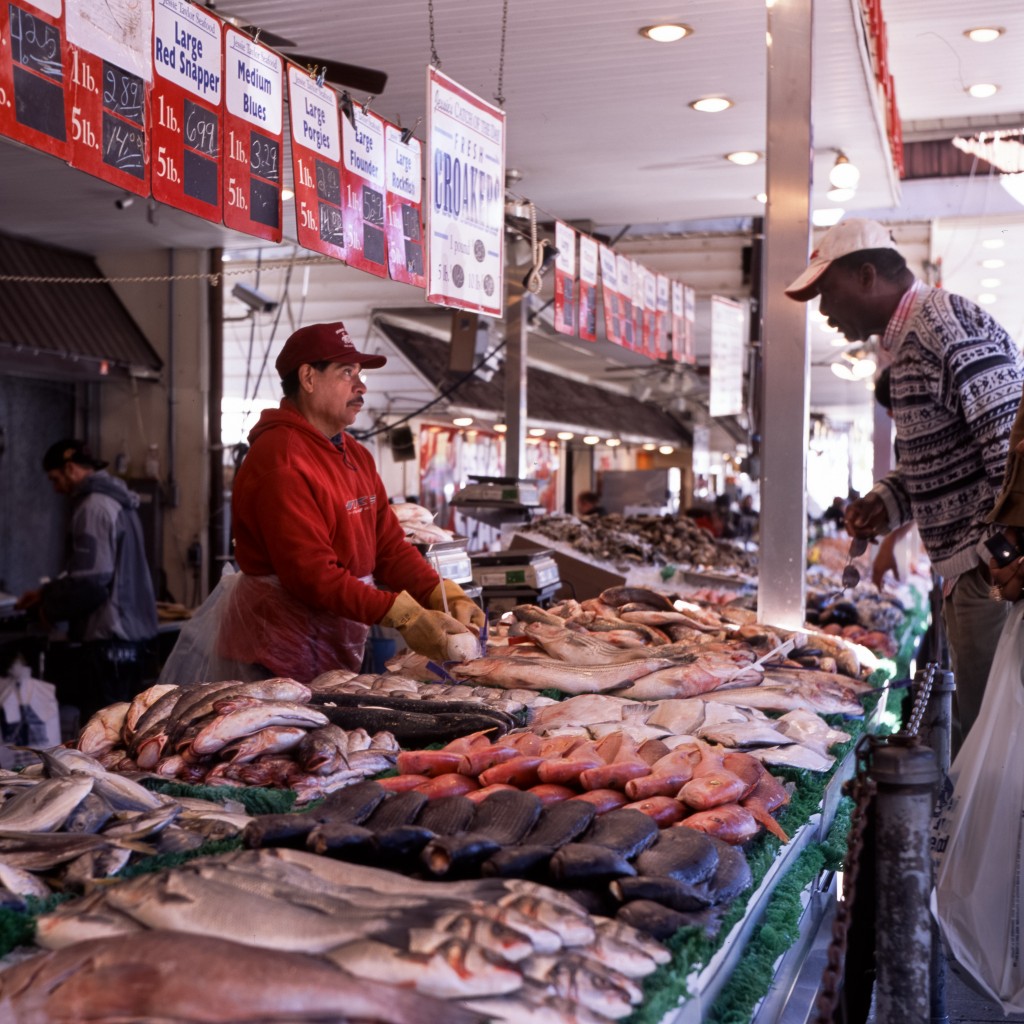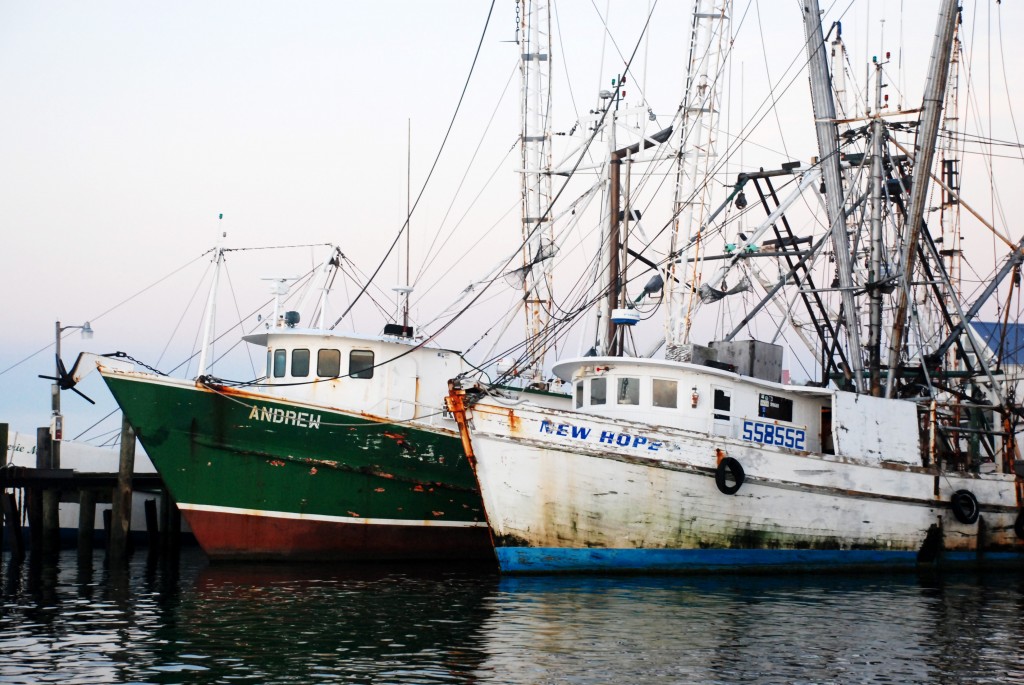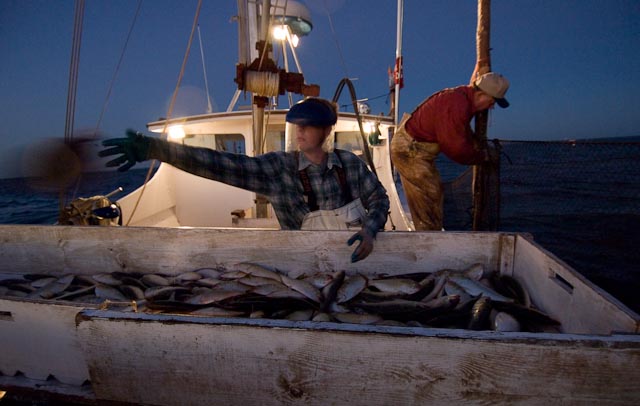What we hear about fish can be confusing:
Eat more — it’s good for you! But not too much of certain kinds, and some you shouldn’t eat at all. Be careful about mercury. And PCBs. You need to know how it was raised. And where it was caught.
It’s enough to make your head spin. Add that to a lack of knowledge about preparing or cooking fish, and you get enough fear and trepidation that some don’t even bother — that’s where I find myself these days.
I love fish, adore going to seafood restaurants and have even ventured to cook it here and there. But, to be honest, I don’t really know a lot about it. That’s why we thought educating ourselves — and our Eaters — on the importance of these issues would be a great way to launch our month focusing on fish.
First, let’s take a look at why it’s a good choice.
Why Should We Eat More Seafood?
Along with the usual suspects like chicken, turkey, beans and lentils, fish almost always tops the list of lean proteins that should be in our diet. The vitamins, minerals and nutrients packed into each serving are what make it such a good option. According to the Washington State Department of Health, its “filled with omega-3 fatty acids and vitamins such as D and B2 (riboflavin) … rich in calcium and phosphorus and a great source of minerals, such as iron, zinc, iodine, magnesium, and potassium.” All of which help to keep our heart and brain healthy.
Lower my risk of heart disease and stroke? Increase my brain power? SOLD!
But as recently as June, the Food and Drug Administration changed its recommendations for how much fish young children and pregnant and nursing women should eat. The recommendations encourage a minimum number of weekly servings of low-mercury fish for these groups, as opposed to the upper limit that had been suggested in the past.
A New York Times blog post on the FDA’s new advice says the agency’s acting chief scientist, Dr. Stephen Ostroff, “cited studies showing that children born to women who consume fish have higher I.Q.s and better cognitive development than children born to women who do not.” And the benefits extend to everyone — not just this pregnant women and children.
The problem is, these guidelines and advisories sometimes have a catch or caveat. Just as we’ve become more aware of the benefits of organic and local vegetables, ethically raised chicken and beef, we should also be cognizant of how and where our fish is sourced.
What’s The Danger?
As with all food, there’s a risk that fish could contain contaminants and pollutants from our environment. According the World Wildlife Foundation (WWF), the chemicals, metals and waste runoff that originate on land inevitably end up in our water. Add to that pollution from humans dumping trash and chemicals directly into the ocean, under the misguided belief that “the solution to pollution is dilution.”
Here’s a list of just some of the most prevalent contaminants found in our ocean’s ecosystem:
- According to the National Resources Defense Council, metals that affect brain function and development, like mercury, enter our waterways and eventually the oceans via large industrial plants, particularly those powered by coal.
- Industrial chemicals like PCBs and dioxins enter the environment as a byproduct of some manufacturing processes. PCBs have been banned in the United States since 1979, but they can still be found globally and in many landfills, leading to continued leaks and inadvertent spills into our environment. Dioxins are an extremely toxic chemical only dangerous when consumed, whose “compounds are associated with cancer, reproductive and developmental abnormalities, and hormone disruption,” according to this study.
- Pesticides, like DDT and other persistent organic pollutants, enter the oceans primarily through improper use and disposal of agricultural and industrial chemicals (see the previous link). These chemicals are particularly problematic as they are repeatedly spread over wide areas of the globe through a continuing process of evaporation and precipitation.
Small plants and animals absorb these pollutants, larger fish eat these small plants and animals and we eat the larger fish. The higher you go up the food chain, the more polluted the seafood becomes. That explains why larger predatory fish like shark, swordfish, king mackerel and tilefish are typically labelled as off-limits, but smaller fish and shellfish can be OK.
A study released just this week finds that vast amounts of plastic littering the ocean’s surface have gone missing. Researchers theorize that the plastics have broken down into tiny pieces, which have most likely been gobbled up by small fish. If true, scientists are now pressed to discover how the toxins from the plastics could further affect our ocean ecosystem … and our seafood.
Toxins from plastic? Mercury from metals? Chemicals from industrial manufacturing? It all sounds very chilling. What can we do about it as consumers?
Sustainability And Sourcing
As I discovered, all of the confusing tips out there lead us to two of the more important issues affecting seafood today: sustainability and sourcing.
The oceans are one of the largest resources we have on Earth, spanning 71 percent of the planet’s surface. For thousands of years, we have depended on this resource to provide us with a seemingly unlimited bounty of seafood. But, like all of our planet’s resources, we’re finding there is a limit — despite the vastness.
As humanity has spread across the globe, advancing technology and efficiencies in fishing have allowed humans to fish deeper and over larger areas. This has lead to overfishing and depletion of many species: The fish cannot naturally keep up. Add to all of this the environmental impacts of ocean pollution and subsequent concerns about sea life contamination, and the future of seafood is a major concern.
This makes it critically important to know the fishing or farming methods used when you are making a purchase. You need to be concerned about where the fish was sourced. Fishermen — small-scale or industrial — should be using ocean-friendly methods to allow a species to reproduce. For example, by simply rotating the areas and populations they fish, fishermen can allow a species to replenish. It’s the same method that sustainable farmers, ranchers and loggers often use to avoid depleting their resources on land.
What Can I Do?
The most important step is to educate ourselves. The Monterey Bay Seafood Watch is an organization dedicated to ocean and seafood conservancy by developing consumer and business recommendations for wild caught and farmed seafood. Read through their recommendations and the sources linked below.
If you’re unsure where a seafood comes from, or how it’s caught or farmed — simply ask! Whether you’re at the seafood or farmer’s market, butcher stand or frozen food aisle at your grocer, or even while contemplating your dinner choice at a restaurant — ASK. If they cannot answer your questions, you can make the call to not make the purchase … and tell them why.
End consumers have the ultimate power to enact change by demanding sustainable fishing practices with our buying choices. Support seafood markets and distributors that obtain, fish or farm their seafood using sustainable and environmentally friendly practices. Frequent restaurants that do the same. Oftentimes, menus convey where their fish comes from and highlights seasonal and local choices. Your server, and ultimately the chef, should be able to educate you on your options.
Where Can I Learn More?
Luckily, Seafood Watch has one of the best resources for helping you select the most ocean-friendly seafood for your area. Every region in the United States has a downloadable guide. You can also use its iPhone and Android mobile apps for the latest information.
Seafood Watch also maintains a “Super Green List” of fish that are not only good for you (contain high levels of omega-3), but also have lower levels of mercury and are classified as green (sustainably sourced).
The WWF provides global seafood guides in various languages in partnership with other organizations, such as Seafood Choices Alliance, North Sea Foundation and Marine Conservation Society.
And for you folks in and around Washington, D.C., Greenease is an resource connecting consumers with restaurants, cafes and grocers in the area that buy from local farms. They take the hassle out figuring out where your food is coming from, and have an app coming soon to make things even easier. Plus — they’re ae concerned about seafood sustainability as we are!
These are such important issues — our environment, our oceans, our seafood … YOUR health. As scientists and experts continue to monitor our seafood and change recommendations, it’s important to keep yourself educated. Before writing this post, it all seemed so daunting, but then I remembered all the amazing dishes I’ve had over the years. The delicate flavor of white fish … or the melt-in-your-mouth texture of sashimi … the briny taste of the sea in a newly shucked oyster. How can that not be worth the time it takes to be informed?
For thousands of years the ocean has sustained humanity, now it’s time to give … back by shopping responsibly.
If you’re in the Washington D.C., area on August 6, join We The Eaters for our first LIVE event! Chef Aaron McCloud from Washington’s Cedar Restaurant, along with representatives from local sustainable seafood provider Profish Ltd., will talk about local issues and give tips for preparing mouth-watering fish at home. Details are coming soon. Join us to learn first-hand from experts!







Thanks for the information and research, Sarah! I love fish, but being the only fish eater in the house, I rarely cook it. Having been pregnant twice, I am well-versed on safer types of fish. But it will take a lot to stop me from having an occasional swordfish or shark steak!